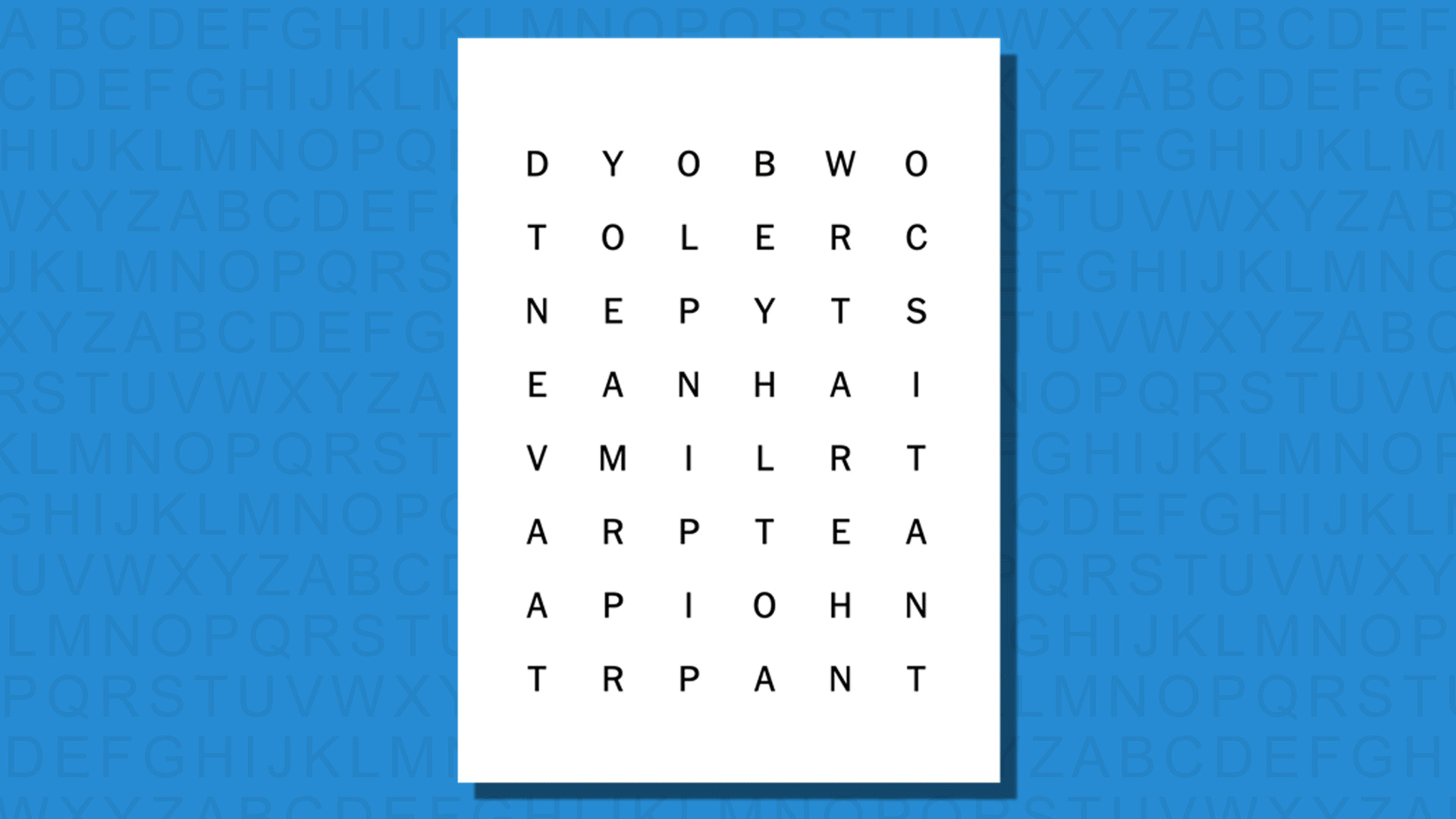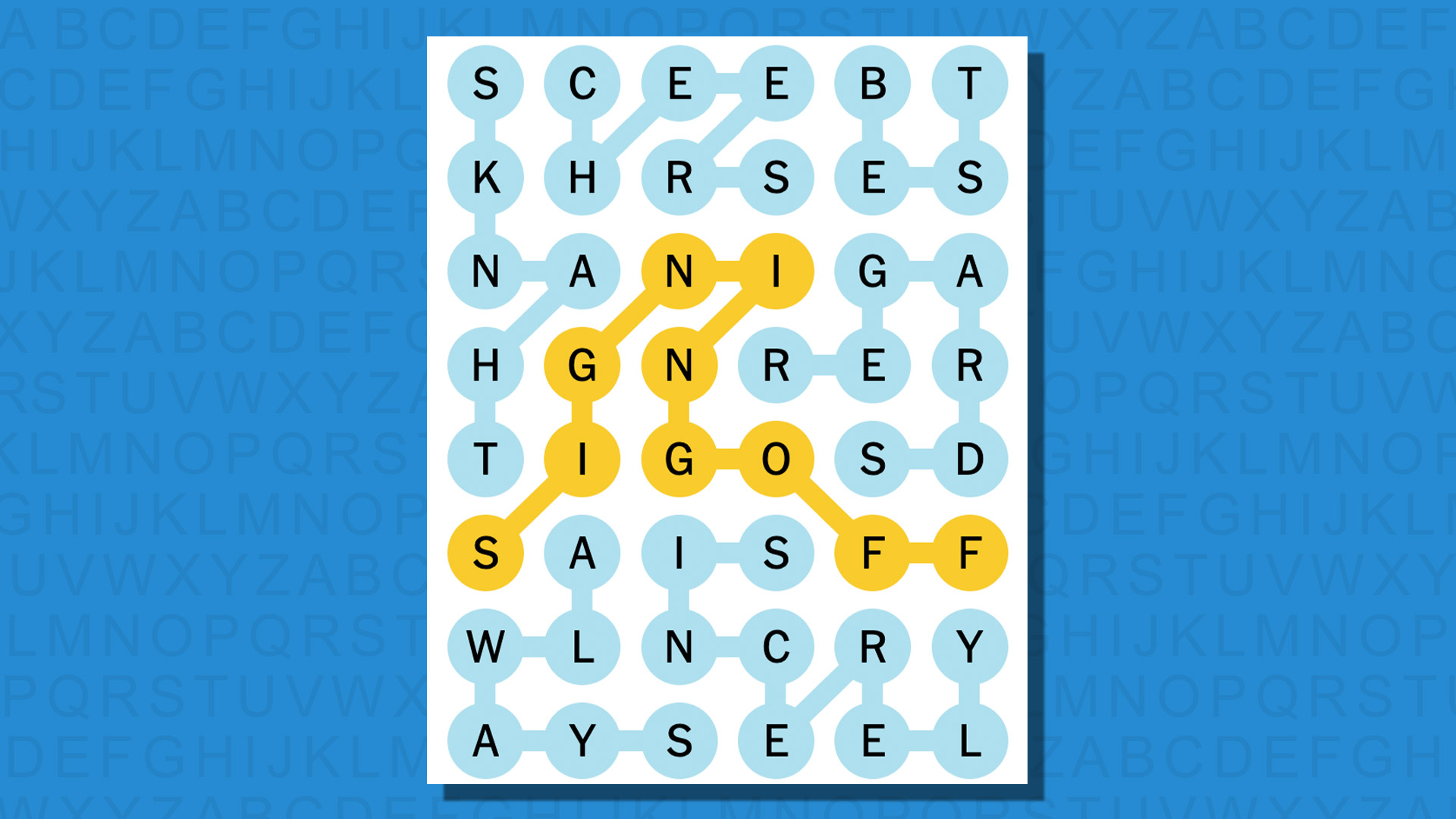
Strands is the New York Times' latest attempt to create a new Wordle. Yes, it's a simple online word game that you can only play once a day. Yes, you play the same game as everyone else. And yes, you can share your spoiler-free scores with each other afterwards.
It's best thought of as a twist on the classic word search puzzle, but more fun than that might sound. If you've not yet tried it, I recommend doing so; I've also got a daily NYT Strands hints and answers page, for if you get stuck when playing.
But before you do that, read on to find out what the rules are and to see my tips for how to solve it.
What is Strands?
Strands is the NYT's new word game, in which your task is to find a selection of words hidden within a seemingly random jumble of letters. It's currently in Beta and can be played on the NYT Games site on desktop or mobile.
Each word is part of a wider theme, which you're given a clue for at the start. You also have to uncover one 'special' word, called the 'spangram', which describes the puzzle's theme in more general terms.
It's played on a board of 48 letters, made up of six columns and eight rows. The aim is to fill the entire board by finding all of the theme words and the spangram.
Think of it as a word search, but taken to the next level: words don't just read horizontally, vertically and diagonally, but instead can be made by drawing a winding path from letter to letter. You can go up or down, left or right, in any direction you want – so long as the letter you play touches the previous one you selected.
Each letter is only used once, and words never overlap.
It's best demonstrated via a GIF, so here you go:

What are the themes and theme words in Strands?
Each Strands puzzle has its own theme, which is described by way of a clue at the start. For instance, to use the example above (game #37), the clue was 'Can I have my quarter back?' This was a play on words, with the answers all being players from football teams, for instance PATRIOT, COWBOY and DOLPHIN.
As you can see, the themes can be quite cryptic – so don't take them all at face value.
Once you find a theme word, it will turn blue, so that you know it's been discovered.
What is the Spangram in Strands?
See that yellow answer above? That's the spangram. This is the most important answer in the game, in that it more closely describes the overall theme; in the football example above, for instance, the spangram was TEAMPLAYERS. In short: while the rest of the answers are specific, the spangram is general.
Another way in which the spangram differs from the other answers is that it MUST run from one side of the board to the opposite one; this could be top to bottom, or right to left. Oh, and it can also be two words smashed together, rather than just one.
What are hint words in Strands?
There are other words hidden within the Strands grid: hint words. These don't count towards the answers, but they're useful all the same, because once you've found three of them you can get a hint. This will show you where one of the theme words is, which makes solving the whole game a lot easier. Find another three and you'll get another hint, and so on.
Hint words can be really short – four letters or more – and can be singular or plural, meaning that if you find one next to an S you can easily find a second straight afterwards.
Finally, you don't have to use the hints that you get – in fact you definitely won't want to, if you want a perfect score.
How does the scoring work in Strands?
At the end of the game, Strands will tell you how you've done. A 'Perfect' score is if you found all theme words and the spangram without using any hints. Otherwise, it will tell you how many hints you needed.
You'll also be able to share your score on social media at this stage, but without any spoilers as to what the answers might be. And that's all there is to it.
How to solve NYT Strands – tips and tricks for a perfect score

1. Start in the corners
The corners of the Strands board are your friends. Hang out there often. That's because the letters there can only go with three others, and in some cases they'll be next to letters that they are never going to precede / follow. For instance, the T in the top right above is almost certainly not going to be followed by the B. Try it out: there's no word that starts TB, or STB. It might end BT – as in DOUBT – but it's easy enough to rule that out. Chances are that before long you'll have worked out that BEST has to be the answer.
2. Look for common letter combinations
Another way to get started is to find a few letters that usually go together (again, the corners are a good place to look), then build from there. Look at the top left in the example above – that K is almost certainly going to be paired with the C, the N or the S, not the H or A. There are only so many ways those letters can be arranged – it's got to be -ANK or -ANKS, or maybe -ECKS. It shouldn't take long from there to find THANKS. The same applies to the L and Y in the bottom right, which are far more likely to be paired than, for instance, the R and L.
3. Look for repeated letters
In Wordle, repeated letters make games harder. Here, the opposite is often true. Take the two Fs at the end of the spangram above; F is not a common letter in general, but it does often appear twice together, for instance in BLUFF, WHIFF and OFF. That combo helped me find the end of SIGNINGOFF, which was vital to solving this Strands puzzle.
4. Look at the edges
The spangram will always go from edge to edge, so looking at the sides of the board is a good way to find where it starts.
5. Don't use your hints unless you have to!
Strands is not that difficult, so you might as well shoot for the best result. You'll almost certainly uncover hint words while you search for the theme words, but you don't have to use them. Leave that 'Hint' button untouched and instead make your brain do the hard work. You'll get more of a sense of accomplishment at the end.







